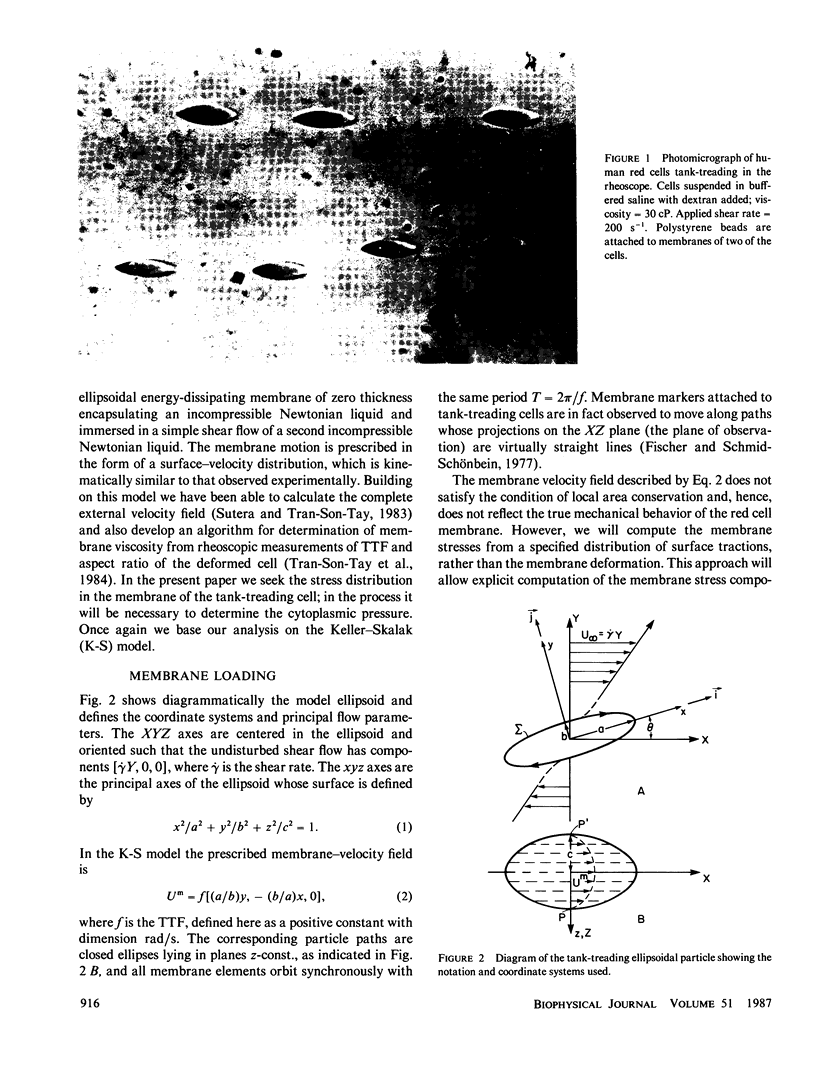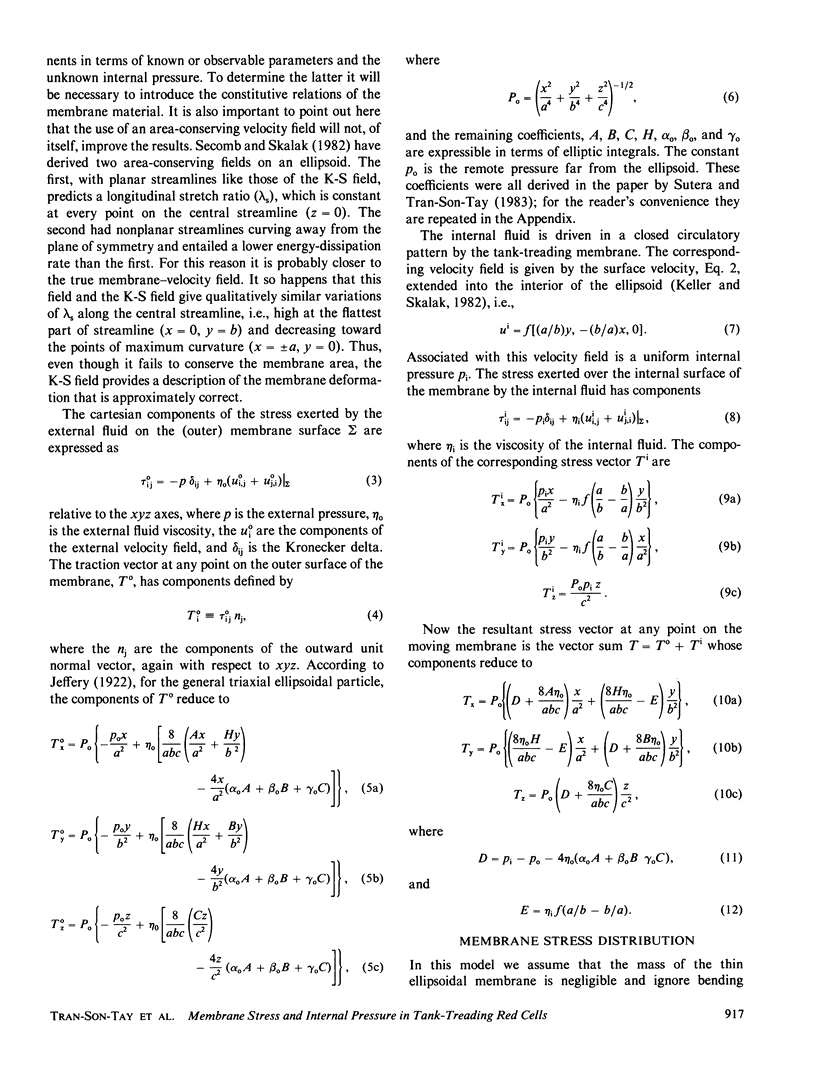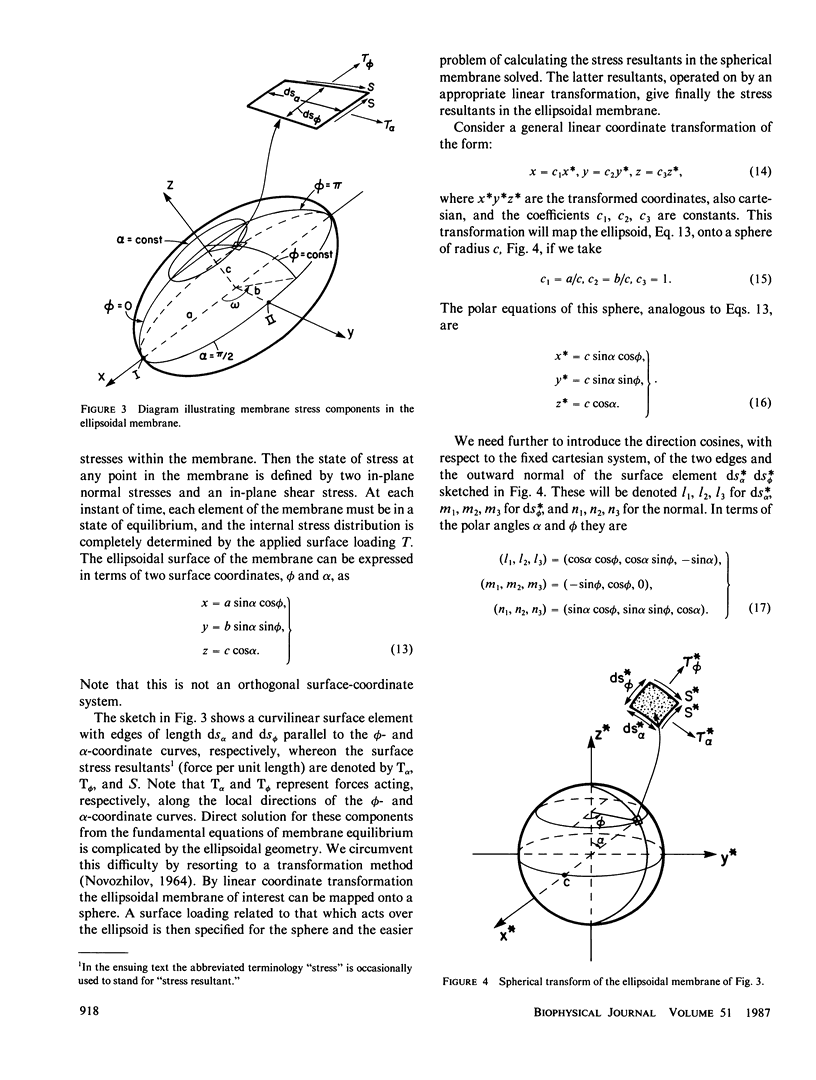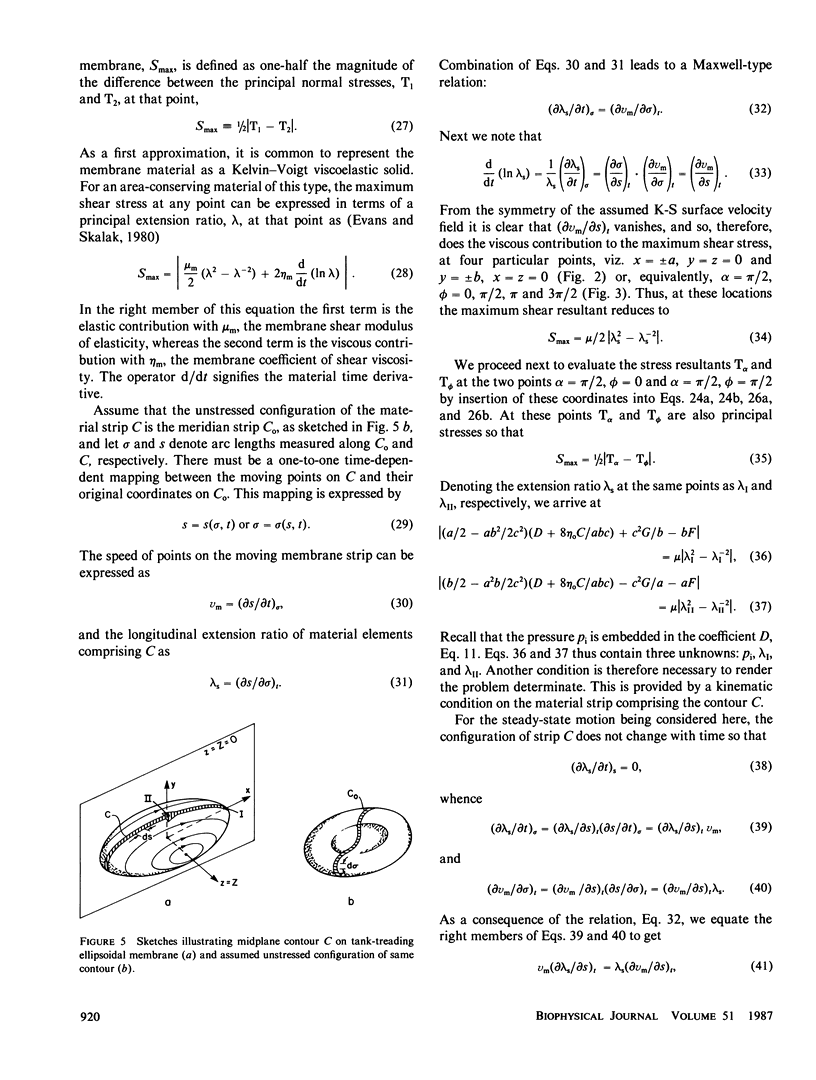Abstract
Presented is an algorithm for the approximate calculation of the membrane stress distribution and the internal pressure of a steadily tank-treading red cell. The algorithm is based on an idealized ellipsoidal model of the tank-treading cell (Keller, S.R., and R. Skalak, 1982, J. Fluid Mech., 120:27-47) joined with experimental observations of projected length, width, and tank-treading frequency. The results are inexact because the membrane shape and velocity are assumed a priori, rather than being determined via appropriate material constitutive relations for the membrane; these results are, nevertheless, believed to be approximately correct, and show that internal pressure builds up slowly as cell elongation increases, rising more rapidly as the deformed cell approaches the limiting geometry of a prolate ellipsoid. The maximum shear stress resultant in the membrane was found to be below but approaching the yield point range at the highest shear rate applied.
Full text
PDF









Images in this article
Selected References
These references are in PubMed. This may not be the complete list of references from this article.
- Linderkamp O., Meiselman H. J. Geometric, osmotic, and membrane mechanical properties of density-separated human red cells. Blood. 1982 Jun;59(6):1121–1127. [PubMed] [Google Scholar]
- Nash G. B., Meiselman H. J. Red cell and ghost viscoelasticity. Effects of hemoglobin concentration and in vivo aging. Biophys J. 1983 Jul;43(1):63–73. doi: 10.1016/S0006-3495(83)84324-0. [DOI] [PMC free article] [PubMed] [Google Scholar]
- Skalak R. Modelling the mechanical behavior of red blood cells. Biorheology. 1973 Jun;10(2):229–238. doi: 10.3233/bir-1973-10215. [DOI] [PubMed] [Google Scholar]
- Sutera S. P., Gardner R. A., Boylan C. W., Carroll G. L., Chang K. C., Marvel J. S., Kilo C., Gonen B., Williamson J. R. Age-related changes in deformability of human erythrocytes. Blood. 1985 Feb;65(2):275–282. [PubMed] [Google Scholar]
- Sutera S. P., Tran Son Tay R. Mathematical model of the velocity field external to a tank-treading red cell. Biorheology. 1983;20(3):267–282. doi: 10.3233/bir-1983-20302. [DOI] [PubMed] [Google Scholar]
- Sutera S. P., Tran-Son-Tay R., Boylan C. W., Williamson J. R., Gardner R. A. A study of variance in measurements of tank-treading frequency in populations of normal human red cells. Blood Cells. 1983;9(3):485–499. [PubMed] [Google Scholar]
- Tran-Son-Tay R., Sutera S. P., Rao P. R. Determination of red blood cell membrane viscosity from rheoscopic observations of tank-treading motion. Biophys J. 1984 Jul;46(1):65–72. doi: 10.1016/S0006-3495(84)83999-5. [DOI] [PMC free article] [PubMed] [Google Scholar]



